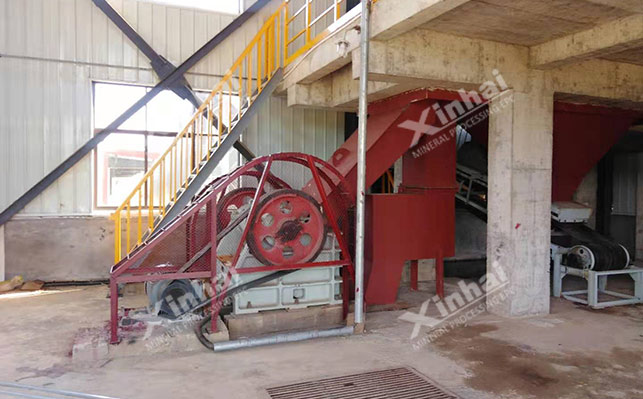As a crystalline graphite, it is widely used in metallurgy, machinery, electrical, light industry, chemical industry, textile, national defense and other fields. It is one of the indispensable non-metallic materials for the global high-tech development. Although the grade of flake graphite is not high, its large flakes have high industrial value. However, in actual production, the phenomenon of over grinding of flakes easily affects the sorting efficiency. Therefore, how to protect the graphite flakes and improve the sorting index becomes particularly important.
In this paper, three graphite flake protection processes, namely, mixed mesh roughing, pre sorting and rapid flotation, are introduced to solve the problem of graphite separation.

It refers to graded grinding and separation of flake graphite after mixed mesh rough separation. The raw ore is subject to mixed mesh roughing through the second to third stage grinding, so as to improve the mineral processing recovery rate without damaging the scale as much as possible. At the first or second section of coarse concentrate concentration, the concentrate shall be graded by using a sieve with appropriate mesh size (≥ 0.147 mm particle size), and then regrinding shall be carried out under different grinding conditions. The products on the sieve are for the purpose of protecting large scales, and the fine graphite under the sieve is for the purpose of improving the fixed carbon content.
On the one hand, this process can avoid the destruction of fine particles on large scale graphite in the process of simultaneous grinding of coarse and fine particles, and can reduce the inhibition of fine particles on large scale graphite in the process of simultaneous flotation of coarse and fine particles. On the other hand, in the regrinding of fine graphite, due to the absence of large scale, the grinding fineness can be appropriately increased to increase the grinding efficiency and shorten the regrinding and regrinding section number, which is conducive to the further improvement of the fixed carbon content of fine concentrate.
Namely, the process of stage grinding, stage separation and molybdenum pre separation of flake graphite is carried out. Screen and analyze the graphite concentrate products at the appropriate cleaning section. When the fixed carbon content of the large scale on the screen of the foam product reaches the concentrate index, screen the concentrate of this section with a screen of corresponding size. The products on the screen are the final large scale concentrate products, and the products under the screen are further grinded and reselected. According to the properties of raw ore and the requirements of final products, grading screens of different sizes can be set at the multi-stage concentration, and the common mesh sizes are 0.5, 0.297, 0.177, 0.147 mm, etc.
By classifying the concentrate at the appropriate concentration section, the qualified flake graphite concentrate is separated in advance, reducing the number of regrinding sections of dissociated flake graphite, and improving the yield of flake of the final concentrate to a certain extent. It is an effective process for protecting graphite flake at present.
At the appropriate coarse grinding particle size, the graphite raw ore is subject to two-stage rough separation after primary rough grinding: the primary rough separation aims to recover large scale with high dissociation, and the foam of the primary separation directly enters the second to third stages for regrinding; The purpose of the second stage roughing is to recover the intergrowth graphite. The foam of the roughing enters the first stage and then grinds into the conventional process. During flotation, appropriate flotation reagents shall be used, such as diesel oil, heavy oil, kerosene, sulfate, phenols, etc; Foaming agent includes No. 2 oil, No. 4 oil, butyl ether oil, ether alcohol, etc.
According to the difference of flotation speed between the dissociated graphite and the intergrowth, the process can separate the dissociated or highly dissociated flake graphite in time by controlling the flotation time, reduce the first to second stage regrinding of this part of flake graphite, and protect the flake graphite to a certain extent.
In order to fully protect large graphite flakes and improve the utilization level of flake graphite, it is recommended that all mine owners select regular manufacturers and formulate scientific and reasonable ones to obtain an ideal rate of return on investment.